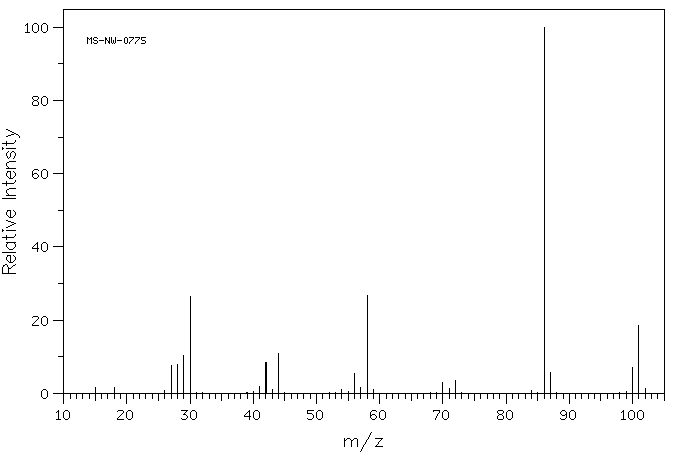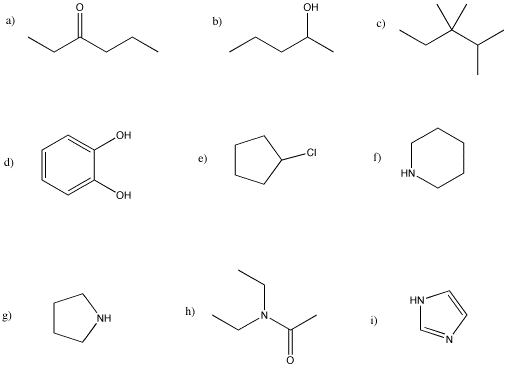
Structure & Reactivity
Introductory Mass Spectrometry
MS8. Molecular Weight: Even or Odd?
There is one other element that can be detected easily just by looking at the molecular ion: nitrogen. Usually if there is a nitrogen present in the molecule, the molecular weight is odd, as you can see in the mass spectrum of triethylamine. That isn't true with other compounds.


Figure MS6. Mass spectrum of triethylamine.
Source: SDBSWeb : http://riodb01.ibase.aist.go.jp/sdbs/ (National Institute of Advanced Industrial Science and Technology of Japan, 22 August 2008)
This phenomenon is a result of the fact that the most common elements in organic compounds, carbon and oxygen, have even atomic weights (12 and 16, respectively), so any number of carbons and oxygens will have even weights. The most common isotope of hydrogen has an odd molecular weight, but because carbon and oxygen both have even valences (carbon forms four bonds and oxygen forms two), there is always an even number of hydrogen atoms in an organic compound containing those elements, so they also add up to an even numbered weight.
Nitrogen has an even atomic weight (14), so any number of nitrogen atoms will add up to an even molecular weight. Nitrogen, however, has an odd valence (it forms three bonds), and as a result there will be an odd number of hydrogens in a nitrogenous compound, and the molecular weight will be odd because of the presence of an extra hydrogen.
Of course, if there are two nitrogens in a molecule, there will be two extra hydrogens, so the molecular weight will actually be even. That means the rule about molecular weight and nitrogen should really be expressed as:
What about those other atoms that sometimes show up in organic chemistry, such as the halogens? Halogens all have odd molecular weights (19 amu for fluorine, 35 or 37 for chlorine, 79 or 81 for bromine, and X for iodine). However, halogens all have a valence of 1, just like hydrogen. As a result, to add a halogen to methane, we would need to erase one of the hydrogen atoms and replace it with the halogen. Since we are just substituting one odd numbered atomic weight for another, the total weight remains even.
Problem MS8.1. Calculate molecular weights for the following compounds.

This site was written by Chris P. Schaller, Ph.D., College of Saint Benedict / Saint John's University (retired) with other authors as noted on individual pages. It is freely available for educational use.

Structure & Reactivity in Organic, Biological and Inorganic Chemistry by Chris Schaller is licensed under a Creative Commons Attribution-NonCommercial 3.0 Unported License.
Send corrections to cschaller@csbsju.edu
This material is based upon work supported by the National Science Foundation under Grant No. 1043566. Any opinions, findings, and conclusions or recommendations expressed in this material are those of the author(s) and do not necessarily reflect the views of the National Science Foundation.
Navigation: